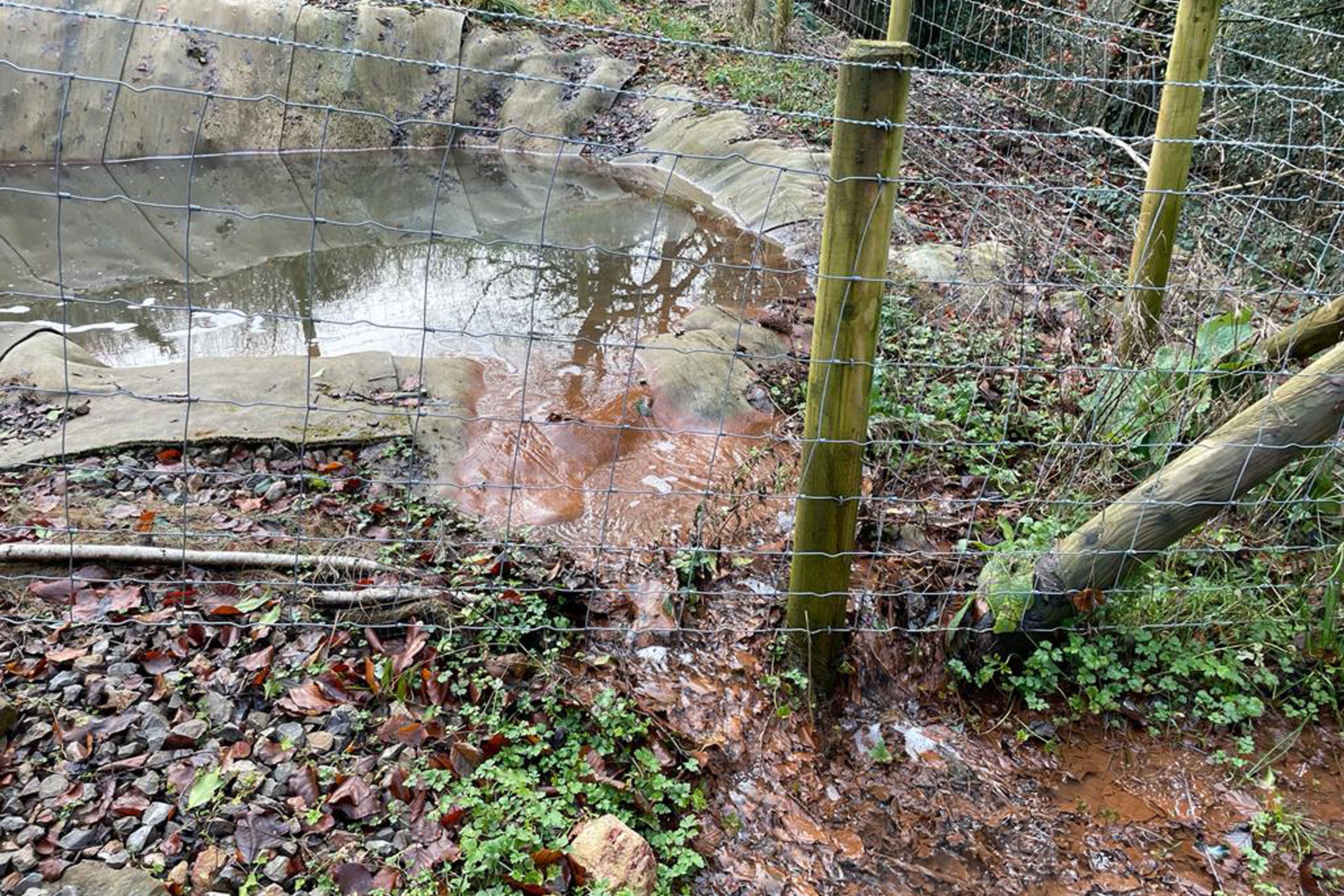South Wales council allowed contaminated liquid to spill on public road
Natural Resources Wales found Caerphilly County Borough Council to have breached regulations in allowing toxic waste to leak from a landfill.

Your support helps us to tell the story
From reproductive rights to climate change to Big Tech, The Independent is on the ground when the story is developing. Whether it's investigating the financials of Elon Musk's pro-Trump PAC or producing our latest documentary, 'The A Word', which shines a light on the American women fighting for reproductive rights, we know how important it is to parse out the facts from the messaging.
At such a critical moment in US history, we need reporters on the ground. Your donation allows us to keep sending journalists to speak to both sides of the story.
The Independent is trusted by Americans across the entire political spectrum. And unlike many other quality news outlets, we choose not to lock Americans out of our reporting and analysis with paywalls. We believe quality journalism should be available to everyone, paid for by those who can afford it.
Your support makes all the difference.A South Wales council allowed liquid contaminated with hazardous chemical waste to spill from a landfill site on to a public road, regulators have found.
Caerphilly County Borough Council (CCBC) manages the Ty Llwyd quarry in Ynysddu, just north of Cardiff, where toxic waste from chemical manufacturer Monsanto, including carcinogenic PCBs, was dumped in the 1960s and 1970s.
In early January, heavy rains caused contaminated liquid, known as leachate, to spill from the quarry and flow through a woodland used by children and dog walkers onto a public road.
After the initial reports, CCBC denied that any of the water leaving the woodland was contaminated, saying it treated the leachate in an aeration chamber, leaving “just normal surface water run-off”.
Several days later, reporters from the PA news agency found this chamber to be overflowing with brown foamy liquid that gave off a malodourous smell.
The level of rainfall caused the leachate drainage system serving the quarry to overtop resulting in water containing leachate to leave owned land known as Pantyfynnon woodland and discharge on to the public highway below the site
Samples taken by independent councillors Jan Jones and Janine Reed from the chamber and analysed by Greenpeace scientists found the liquid to be heavily contaminated with dangerous chemicals, including PCBs.
Environmental regulators Natural Resources Wales (NRW), said they attended the site on January 3 and have been investigating the pollution since, taking their own samples.
On June 20 they issued a warning to CCBC saying the council committed an offence of causing or knowingly permitting a water discharge activity and that pollution to land and water had occurred.
Jon Goldsworthy, operations manager for NRW, said the warning was issued “based on the proportionality of the offence committed and the ongoing commitment CCBC are making in ensuring future discharges do not occur”.
He added: “We will also be recharging CCBC for our costs of responding to and investigating the incident under the polluter pays principle.
“It is likely that CCBC will require a permit to discharge to water or ground and they have appointed consultants to advise them of the necessary actions to control any further pollution from this site.
“We understand that CCBC are awaiting these proposals from their consultants.
“Once the proposals are available and actions are agreed, timescales will be imposed. Failure to abide with the agreed milestones may result in additional enforcement action.
“We will continue to work closely with CCBC to provide technical advice and guidance to tackle this issue and protect the environment, local communities and wildlife from the impacts of this legacy.”
CCBC said in a statement: “NRW have completed their investigation of the contaminated water (leachate) breach that occurred below Ty Llwyd quarry in early January 2023 as result of a prolonged rainfall event.
“The level of rainfall caused the leachate drainage system serving the quarry to overtop, resulting in water containing leachate to leave owned land known as Pantyfynnon woodland and discharge on to the public highway below the site.
“Since the event, the council has continued to work in partnership with NRW in relation to Ty Llwyd and have recently entered in to pre-application discussions to determine whether there is a requirement for a formal water discharge consent to be in place at the site.
“Further technical assessments will be required to inform this process and the council will be working with their contaminated land consultants to progress this work and produce an updated management plan for the site.”
Cllrs Jones and Reed said they feel vindicated after NRW’s conclusion after repeated attempts to bring the contamination issue to the attention of the council and NRW.
“Good to know that NRW have now listened to the residents who live underneath the quarry,” Cllr Jones said.
“We are vindicated. We have been saying for years that the council were illegally discharging contaminated water into the community forest and the private land below, ultimately ending up in the Sirhowy river.”
Conservative Senedd member Natasha Asghar, who is also running to be Mayor of London, has previously called for Ty Llwyd to be designated as contaminated land and wants the Welsh Government to step in.
PA understands that a meeting between minister for climate change Julie James, CCBC and NRW has been arranged for July 4.